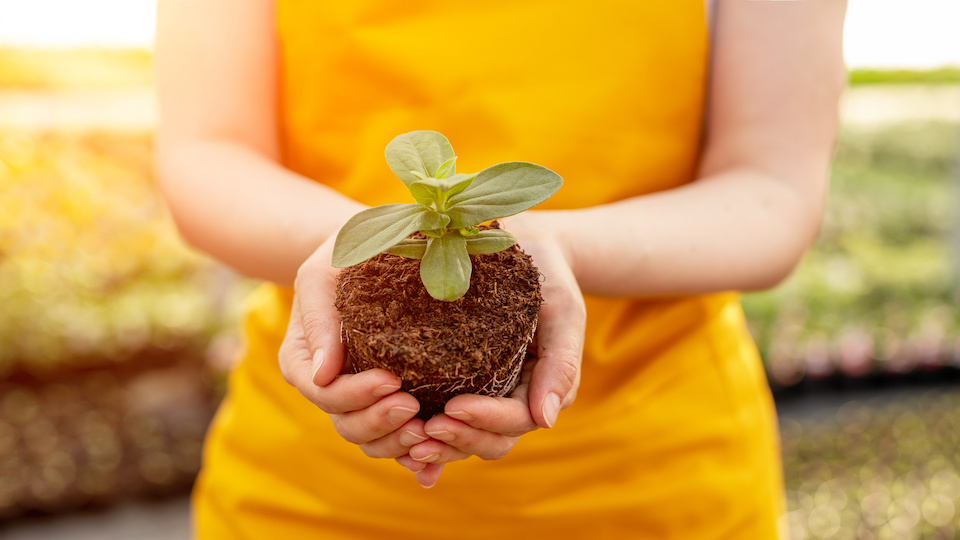Peat is a fibrous material made up of partially decomposed plant materials and natural forms in the earth in locations that fulfil particular requirements. For instance, the climate has to be mild (not rising above a certain temperature), stagnant water must be present, and it will only form in anaerobic conditions, which essentially just means the the absence of oxygen. Peat is most commonly found in Russia and Canada.
This substance is one of the most popular ingredients in store-bought compost and soil mixes due to its fertile nature and unique aeration and water retention capabilities. It has risen to stardom over the last 100 years as home gardeners have discovered the benefits and ease of growing in peat. Peat is used most commonly by amateur gardeners as it is a low maintenance substance that won’t break the bank. Plus, it produces incredibly fertile plants and increases yield.
What is the problem?
Though it seems like the golden growing material, peat has a dark side. Peat is harvested from peat bogs around the world in exceedingly large quantities. Over the past years, the demand for peat and the rising disappearance of these fragile ecosystems has lead to a movement to ban the use of peat altogether.
Putting wildlife in danger
Many people don’t even know where peat comes from and simply purchase it in the store without a second thought. In reality, the mass destruction of peat bogs puts a number of animals in danger that call this unique area home.
Not sustainable
Plus, peat is not sustainable or renewable. It develops a new layer every year that is a mere sixteenth of an inch deep. This means that large destruction of peat bogs is tearing up hundreds of years of growth and it is being extracted far faster than it can be replaced.
Releases carbon dioxide
Anyone with a cursory understanding of climate change or global pollution knows that carbon dioxide is a big deal. And peat harvesting isn’t doing much to help the issue. In fact, beat pogs hold one-third of all the world’s soil carbon, which is astonishing considering that peat bogs make up a mere 2% of the earth’s surface. When peat is collected, carbon dioxide is released into the atmosphere, only contributing to the growing pollution problem.
What can be done?
Though Europe is taking steps to reduce peat use for hobby and commercial gardening, no such measure has been introduced in the United States. The best thing you can do is stop buying peat and inform others of the danger this seemingly innocuous material poses to the environment.
Peat alternatives
Though there is not a single substance that can mimic all of peats beneficial properties when certain ingredients are blended together, proper porosity and water retention can be achieved. Yes, it may be easier to simply purchase peat moss, but is the environmental strain actually worth it? Mixes with these alternatives are hopeful answers to the peat problem.
Compost
Properly maintained and carefully cultivated compost is one of the best renewable resources for gardens. It allows you to dispose of natural waste and generate healthy, nutrient-rich soil that aids in plant growth and provides important minerals. Composting is fairly easy, just be sure to follow proper compost guidelines to ensure your piles gets hot enough to kill any lingering seeds or disease. If you aren’t compost-confident or don’t have space, simply buy bags of organic material at your local nursery or garden store.
Worm castings
Though it can’t be used alone for gardening, worm castings is a common ingredient in many peat-free soil mixes. This is essentially the waste from farmed earthworms and is full of beneficial nutrients. It serves the same purpose as peat moss buy encouraging airflow and helping with moisture retention.
Pine bark
Pine bark is a renewable resource and is finely shredded and composted to form a viable peat moss substitute. It is another ingredient; however, that is best when combined with other substances in a soil mixture.
Coconut coir
Coconut coir, or fiber, is actually a byproduct of coconut fiber processing. It has similar properties to peat moss and is becoming popular among those seeking more sustainable alternatives. However, it is important to note, the carbon footprint of coconut coir may be more than you suspect. It is usually shipped long distances to reach the U.S. and it is a byproduct of coconut plantations, not a naturally occurring substance.
Do you know of any other peat alternatives? Let us know in the comments below!
-Taylor Ramsey



